Hayley Hesseln’s home looks like any other in her Saskatoon neighbourhood, from the outside.
But atop her kitchen counter, huddled over the remnants of a hard-boiled egg, is a tiny baby raccoon.
“This one was unexpected,” Hesseln said. “When I got her, she was just under a pound. Really little; too young to be released into the wild this year.”
For the last several years, the university professor has split her time between researching wild fires and providing rehabilitation for displaced and orphaned raccoons.
The labour of love started when she found an injured bat and got connected with Living Sky Wildlife Rehabilitation.
From there, she worked with all kinds of animals to eventually become the “raccoon lady” who runs Bandit Ranch Rehab.
“First year I had six, then it went up to seventeen, then into the twenties and the thirties,” Hesseln said, adding last year she had 54 in her home at one time.
She explained when the babies are tiny, they stay in Rubbermaid bins inside the home. As they grow, they graduate to pens in the garage before being moved to backyard shelters.
“They actually turn quite wild, and what we try to do is reduce the human interaction after they’re weaned,” she said.
“Right now it’s difficult because if I leave (the baby raccoon) alone, she’ll just cry and cry and cry.”
The now six-week-old raccoon, named Dixie, weighs a little over two pounds. Hesseln said she was shocked to see a baby so late in the season, as raccoons usually give birth in April, sometimes May.
“When I get them they generally fit in my hand. Their eyes are closed, they’re a few days old,” Hesseln said.
She told 650 CKOM Dixie was brought in by someone who spotted the baby raccoon by itself.
“A lot of people think these baby animals are orphaned. But at the age that Dixie is, she’s probably out wandering around with her siblings while mamma was sleeping,” Hesseln said.
“In the spring, so many people shoot mamma, run over the mother, and then they become orphaned.”
While she wanted to re-integrate Dixie to her family, the owners of the property where Dixie was found didn’t want raccoons on the land.
Once Dixie ‘s weight increases, she will progress through the rehabilitation stages at Hesseln’s home, before going to pens out in the country.
“They learn to climb trees, dig for grubs, do all that kind of raccoon-y stuff. They wild up and want to be free,” Hesseln said, adding that when the time comes, the raccoons are released away from private property.
In all, rehabilitation costs roll into the thousands of dollars, with specialized milk coming from the States in pails for $400.
Saskatoon city bylaws don’t allow raccoons as pets. However, Hesseln noted that since they’re not a protected species, people are allowed to have them in the country.
Hesseln has a permit from Ministry of the Environment to rehabilitate raccoons with the expectation they are returned to the wild.

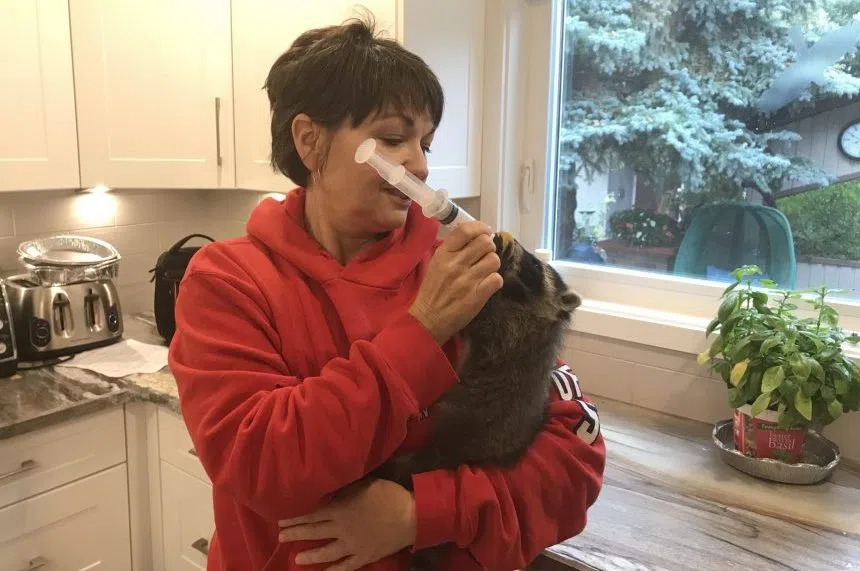
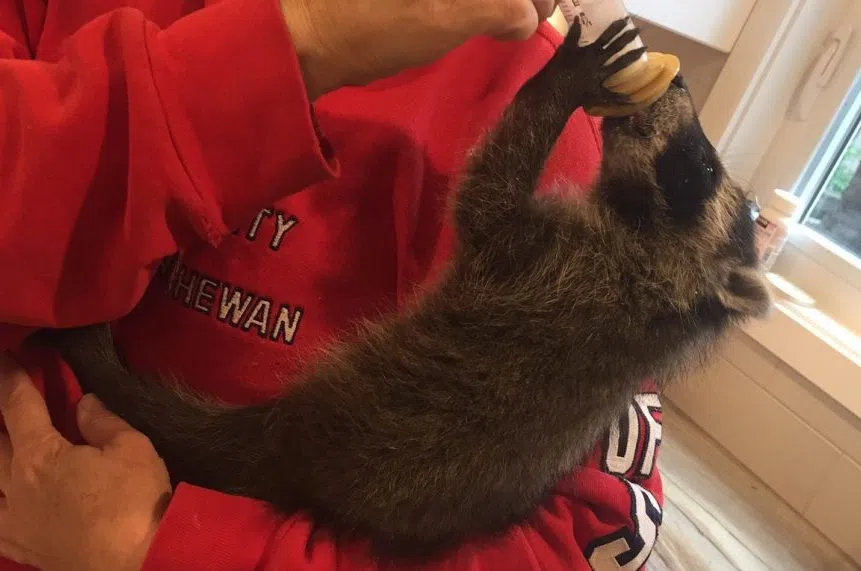
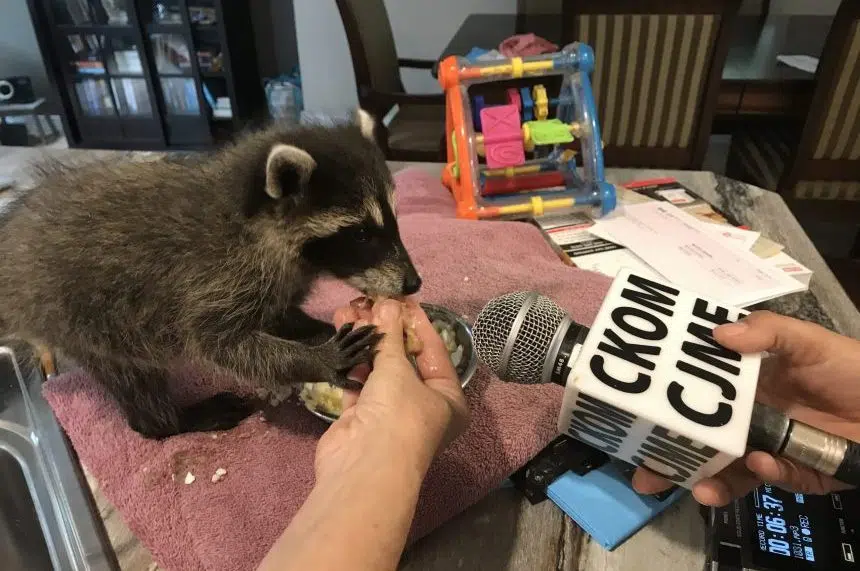
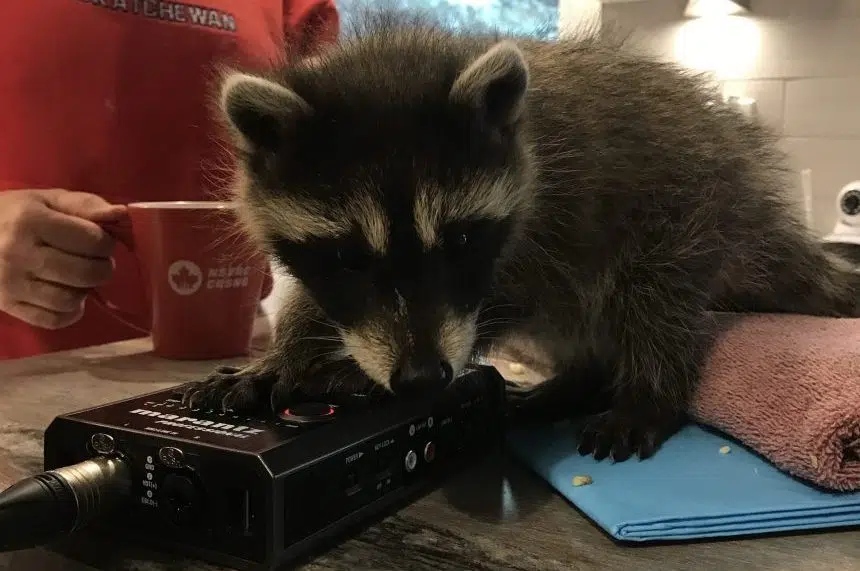

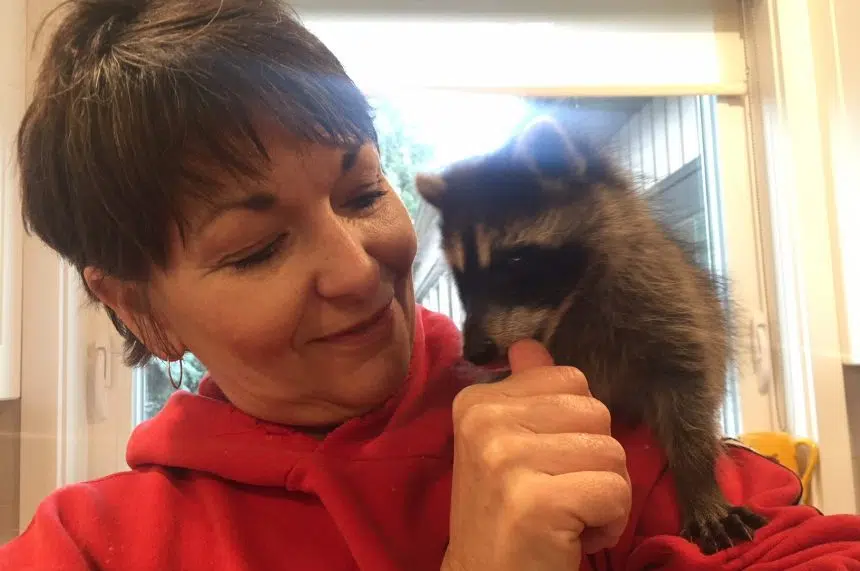
More rural living, more raccoons displaced
Hesseln’s work as the raccoon lady has steadily increased over the years.
“More negative human-wildlife interaction. People move into the acreages outside the city and raccoons are expanding as well, they go along the water ways,” she said.
Last year, Hesseln received around 60 raccoons. This year, it’s half that due to a bout of distemper spreading within the population.
“It’s like the plague for raccoons. Dogs can get it,” she said, adding each raccoon that comes through Bandit Ranch is vaccinated.
She said if homeowners have raccoons living on their property, there are humane ways to get them to move.
“The mother will usually have a second den site,” she said.
“What you need to do is put stinky rags, maybe soaked with ammonia, you leave a light on, you play music…and they will feel it’s not a safe place and move the litter to a safe place.”
Hesseln said she usually gets two kinds of reaction to what she does – one of disbelief and confusion, the other of gratitude.
“Because we’re giving them a second chance. They’re part of nature, they perform important functions,” she said.
“We won’t have pigeons on your property if you have raccoons. You won’t have mice. So I think everything deserves a chance.”










